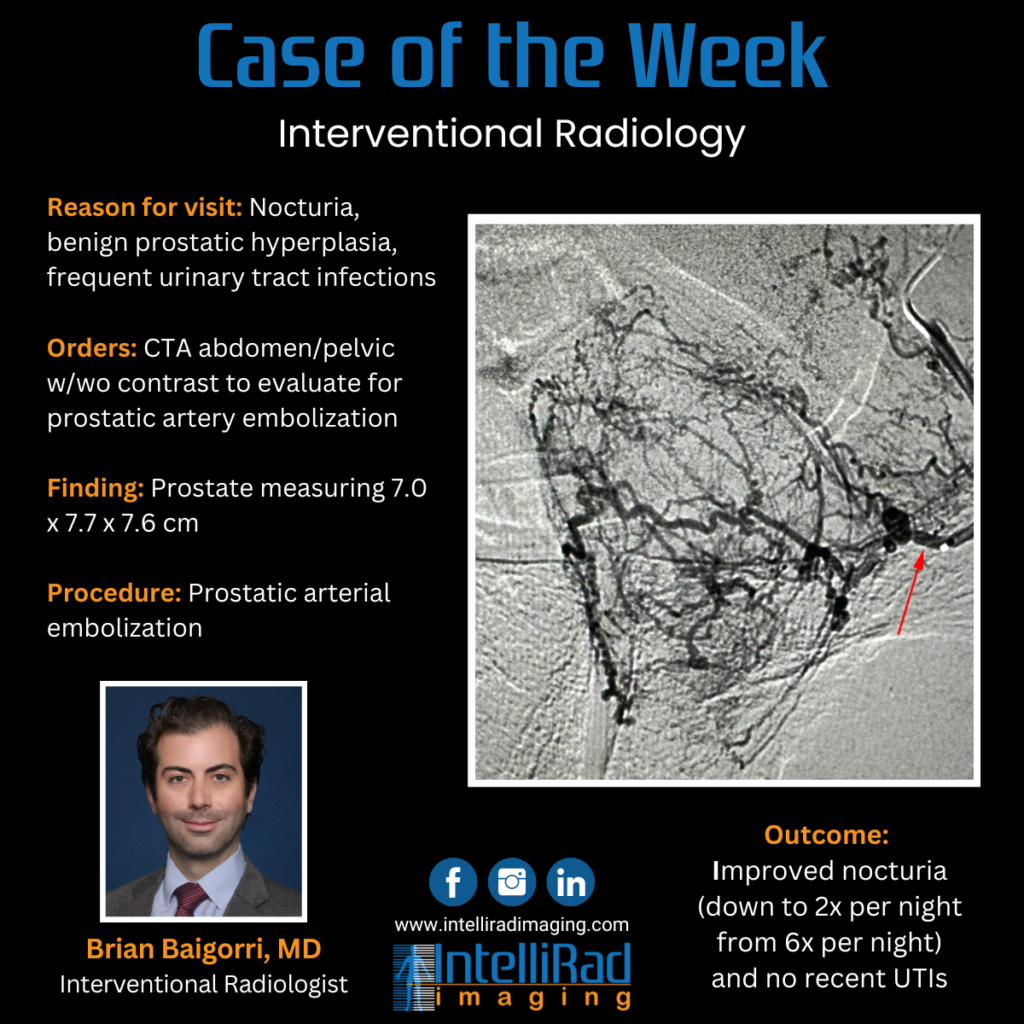This Case of the Week is a prostatic artery embolization (PAE).
A 76-year-old male was referred to us by his urologist for a potential prostatic artery embolization (PAE) procedure. The patient was diagnosed with benign prostatic hyperplasia (BPH) (enlarged prostate gland) that caused frequent urinary tract infections (UTI) as well as nocturia despite medical management. Our APRN, Kristine, discussed GreenLight Laser, transurethral resection of the prostate (TURP), and PAE as options for his BPH.
PAE is a minimally invasive procedure performed on an outpatient basis that involves the targeted release of microscopic particles into the arteries that feed the prostate gland. These tiny particles then block off the blood flow to the prostate and, over several weeks, the prostate decreases in size. Up to 90% of patients enjoy relief of their symptoms with improvements after 1 to 3 weeks. The patient decided that the PAE was the best option for him. CTA imaging revealed a 7 cm prostate, approximately twice the size of a normal-sized prostate.
Dr. Brian Baigorri performed prostatic arterial embolization utilizing a combination of 200- and 400-micron particles from a left radial approach. Repeat angiogram after embolization demonstrated stasis. The patient tolerated the procedure well. There are no immediate post-procedure complications.
At the one-month follow-up visit, the patient reported improved nocturia (down to 2x per night from 6x per night) and no recent UTIs. Our clinic will follow up with this patient at three months and again at six months.

